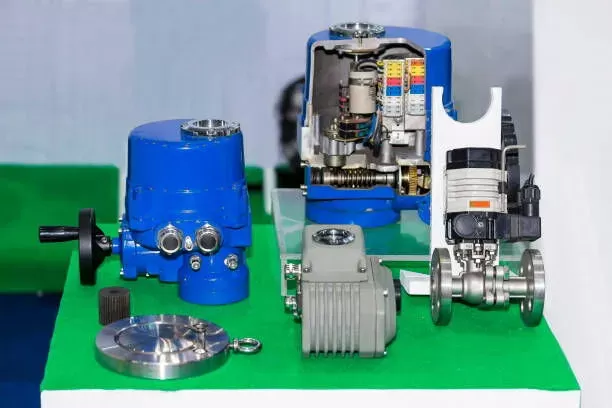Notifications

7 minutes, 33 seconds
-4 Views 0 Comments 0 Likes 0 Reviews

Introduction
In modern industrial production, control valves are essential for regulating flow, pressure, and temperature across a wide range of systems. However, prolonged operation without proper maintenance or recalibration can lead to stroke inaccuracies—where the China Control Valve fails to reach the intended open or closed position. Such deviations compromise process efficiency, stability, and safety.
This article explores the concept of stroke accuracy, calibration procedures, and the evolution of valve positioners—highlighting their role in maintaining precise control in automated systems.
The "stroke" of a control valve refers to the full travel range of the valve plug or disc, typically from 0% (fully closed) to 100% (fully open). Over time, mechanical wear, vibrations, fluctuating process pressures, and environmental influences can cause discrepancies between the control signal (usually 4–20 mA) and the actual valve position. For example, a command for 25% opening might result in the valve opening only 15%, causing flow mismatches and instability.
To correct this, routine calibration and mechanical adjustment are necessary—particularly in systems where precise control is critical.
Technicians commonly calibrate control valves using five stroke reference points across the signal range to ensure accuracy and linearity. These benchmarks allow for comprehensive fine-tuning of the valve’s responsiveness and consistency across its operating range.
Mechanical valve positioners, which translate the control signal into valve movement using cams, springs, and linkages, require manual adjustment of two key settings:
Zero: The valve position at the minimum control signal (e.g., 4 mA)
Span: The range between the minimum and maximum travel (typically from 4 mA to 20 mA)
Let’s walk through the calibration procedure using a standard air-to-open valve as an example.
1. Zero Point Adjustment (4 mA Signal)
Apply a 4 mA signal, which should fully close an air-to-open valve. If the valve remains partially open, manually adjust the zero setting inside the positioner until full closure is achieved. This sets the baseline for the stroke range.
2. Mid-Point Adjustment (12 mA Signal / 50% Stroke)
Apply a 12 mA signal to target a 50% open position. If the valve does not reach this midpoint accurately, adjust the span setting. Ensure that the feedback linkage between the positioner and valve stem is perfectly vertical—any angular misalignment can skew stroke response.
3. Full Stroke Verification (20 mA Signal / 100% Stroke)
Apply a 20 mA signal to check whether the valve fully opens. If there's deviation, recheck and adjust the span and linkage as needed to ensure full-range travel.
4. Fine-Tuning at 25% and 75%
Verify valve positions at intermediate points (25% and 75%) to ensure linear operation. Reiterate zero and span adjustments if discrepancies are found.
This iterative calibration ensures smooth modulation and minimizes control signal error across the full stroke.
With advancements in automation, valve positioners have evolved from entirely mechanical designs to sophisticated, digitally controlled units.
Still widely used, particularly in budget-sensitive or harsh environments, mechanical positioners operate using physical linkages, cams, and feedback springs. While durable, they require manual tuning, regular inspection, and hands-on calibration.
However, working with mechanical systems provides valuable insight for instrumentation technicians. It builds core knowledge of valve mechanics and lays the foundation for understanding more complex digital systems.
Intelligent valve positioners use microprocessors and digital communication to interpret control signals and adjust valve positions automatically. They feature:
Auto-zero and auto-span calibration
Built-in diagnostics and fault detection
Remote configuration and feedback
Digital interfaces for easy operation
These positioners drastically reduce manual labor and calibration time, increasing both accuracy and efficiency. Despite their simplicity of use, understanding how to interpret diagnostics and configure settings remains essential for maintenance teams.
Regardless of type, the valve positioner is a critical interface between the control system and the final control element. It ensures that the physical valve position accurately reflects the command signal.
A failed positioner—whether due to mechanical wear, signal loss, or internal error—can disrupt the entire control loop, forcing manual intervention or triggering shutdown protocols. In industries like oil and gas, chemicals, or power generation, these failures can result in substantial downtime or even hazardous conditions.
To maintain valve stroke accuracy and prevent failure:
Schedule Regular Calibration
Calibrate every 6 to 12 months, depending on usage intensity and environmental exposure.
Check Linkage Alignment
Ensure feedback linkages are vertical and properly connected to avoid introducing hysteresis or non-linear travel.
Avoid Over-Tightening Components
Excessive tightening during reassembly can distort internal parts or affect calibration precision.
Use Diagnostics
For digital positioners, utilize onboard diagnostics to monitor valve health, sticking tendencies, or deadband issues.
Keep Detailed Records
Document calibration settings, valve response times, and maintenance logs. These records support long-term reliability analysis and root cause investigations.
Control valve accuracy is fundamental to process efficiency, safety, and system stability. Both mechanical and intelligent valve positioners serve as vital tools for achieving and maintaining precise valve control.
Mechanical positioners remain practical in many installations and offer training value for new technicians. Meanwhile, intelligent positioners provide speed, diagnostic insight, and integration capabilities suited to advanced automated systems.Know more about Google SEO Directory
Regardless of technology, one principle remains constant: without proper calibration and maintenance, no positioner—mechanical or digital—can ensure reliable control. Investing in stroke accuracy safeguards the performance of your entire process, from the control room to the final control element.

